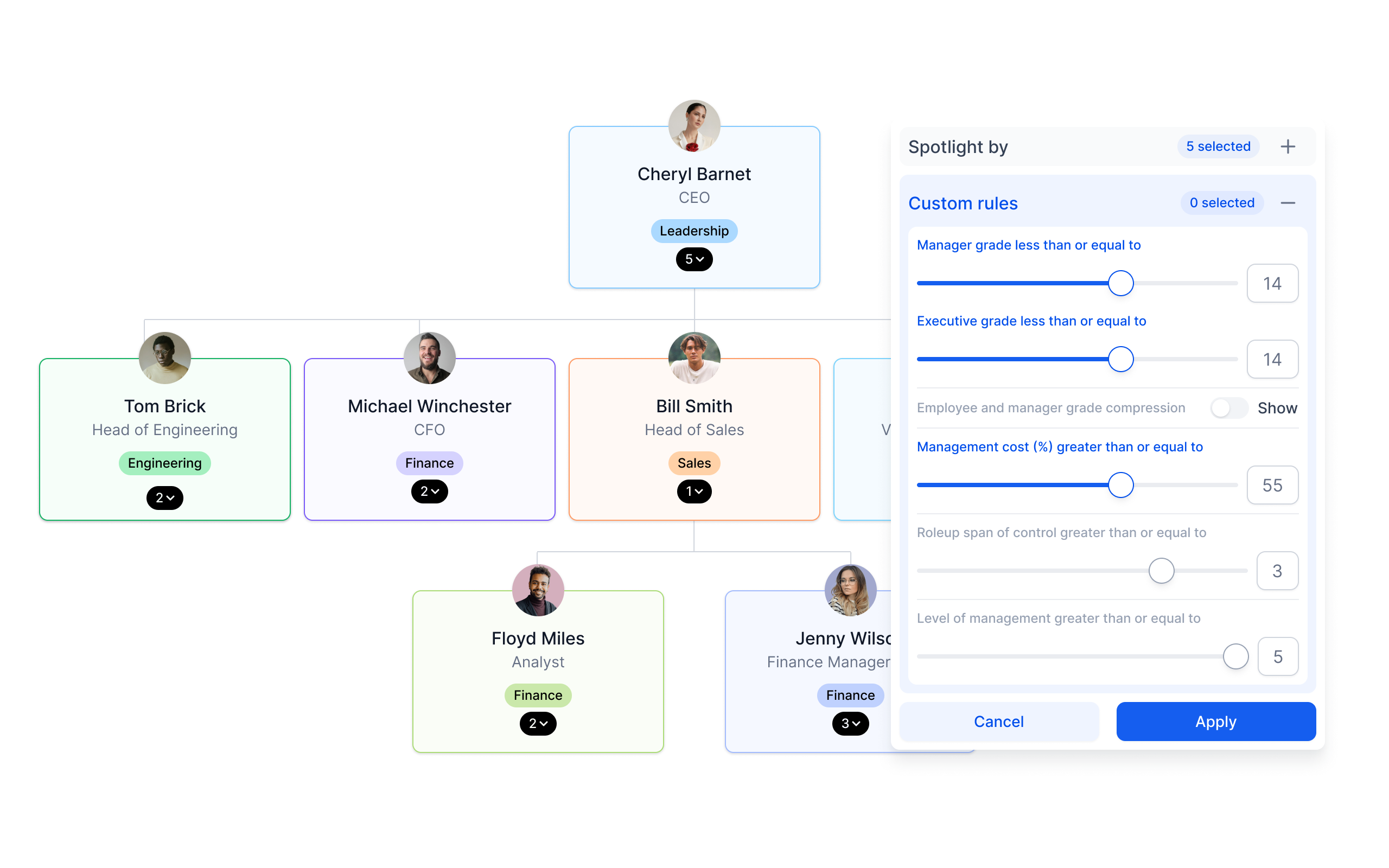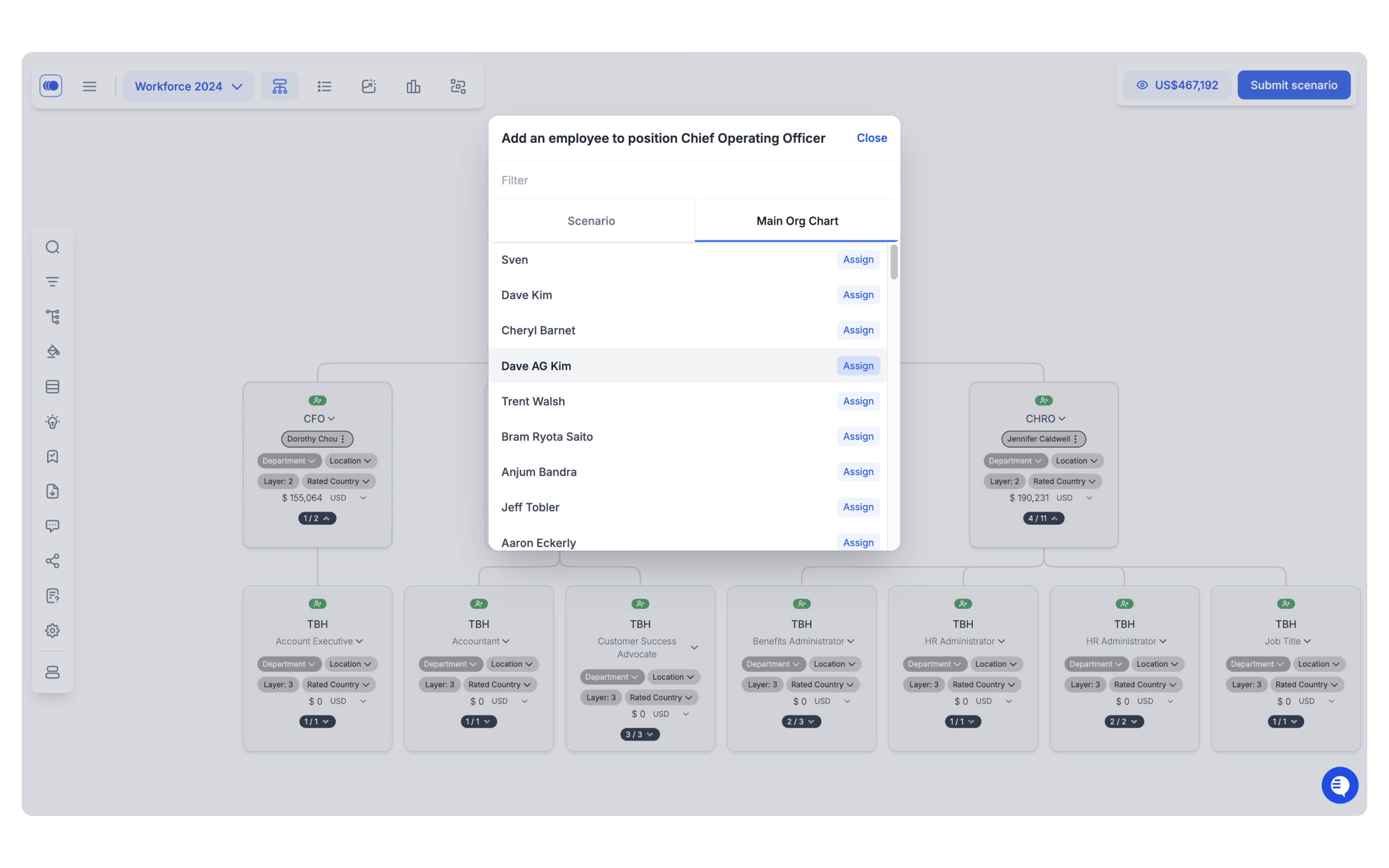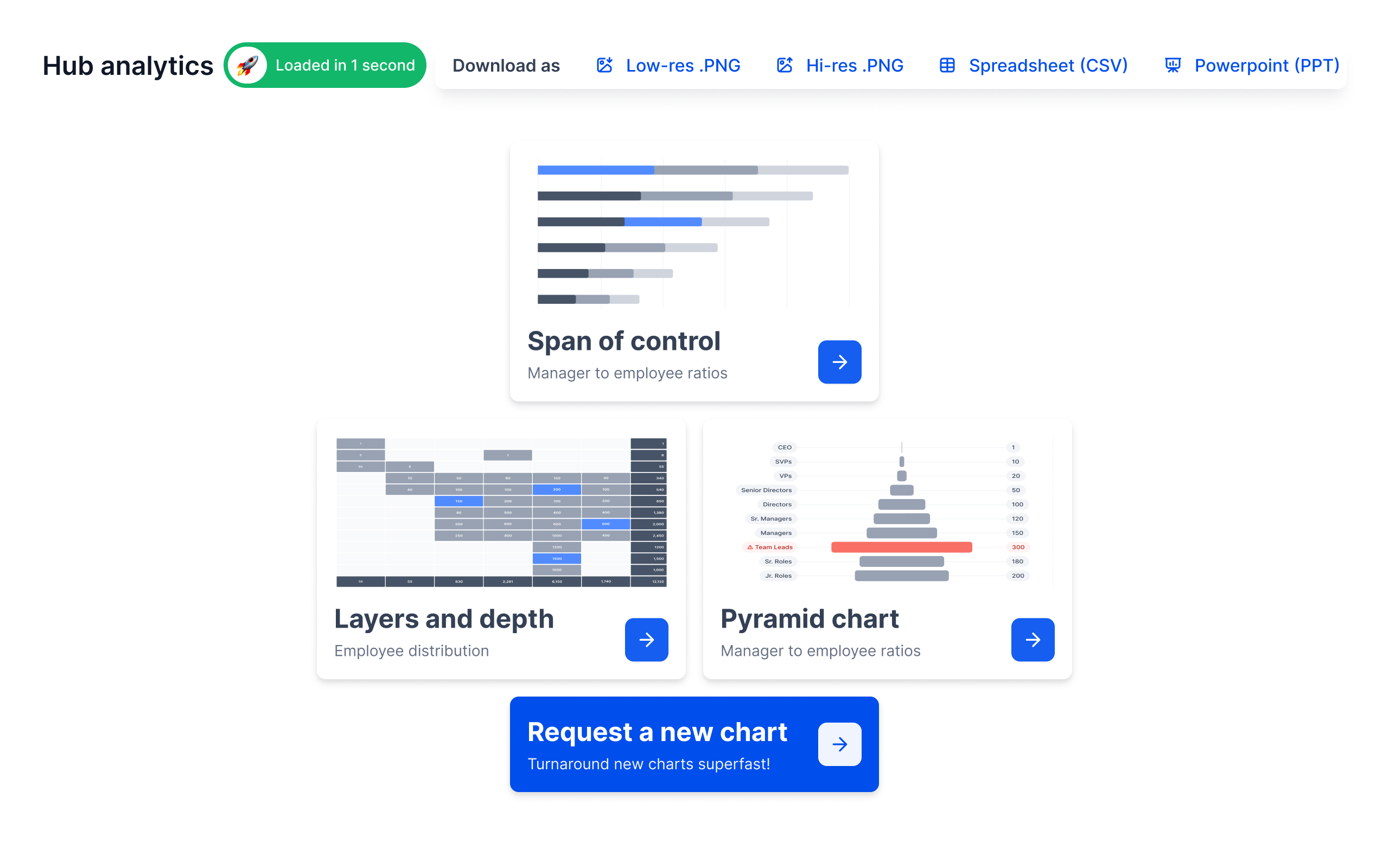Org Transformation
Drive org transformation with confidence
Optimize your org for scalable transformation
Org Redesign
Rebuild your
org structure
Visualize your current structure, identify inefficiencies, and redesign your organization’s structure from the ground up.


Talent Mapping
Map the right talent to
the right positions
Align your talent with the new org structure's requirements. Ensure the right positions are matched and reduce disruptions during transitions.
Measure Progress
Track progress and
stay on target
Keep your transformation on track by measuring performance against set goals and adjust plans to meet changing needs.

FAQs
Organizational Transformation
Organizational transformation often requires changes to structure, processes, and workforce alignment. Agentnoon supports transformation efforts by providing:
- Org structure visibility: View reporting lines, spans, layers, and team distribution at a glance
- Scenario planning: Model changes to structure, cost, or teams before implementation
- Collaboration workflows:
Align stakeholders with shared views, comments, and approvals - Impact tracking: Analyze how structural shifts affect agility, headcount, and cost in real time
- Versioning and benchmarking: Compare current vs. future states and monitor change over time
Agentnoon helps HR and strategy teams lead transformation initiatives with greater clarity, flexibility, and speed - without relying on disconnected spreadsheets or static tools.
Unlike one-time transformation reports, Agentnoon enables leaders to track workforce evolution over time - analyzing headcount trends, reporting structures, and cost implications.
By comparing past and present models, companies can assess decision-making improvements, workforce optimization, and long-term agility. Organizations can continuously refine strategies to ensure transformation success is lasting.
Organizational transformation is the process of fundamentally reshaping a company’s structure, strategy, and workforce to adapt to new goals, technologies, or market conditions. It often involves changes in reporting lines, team composition, and cost structure.
While transformation isn’t solved by a single tool, Agentnoon supports it by helping teams:
- Visualize and analyze the current org structure
- Model multiple future-state scenarios
- Forecast the cost and operational impact of proposed changes
- Align stakeholders with collaborative planning tools
Agentnoon makes it easier to lead transformation with clarity, speed, and data - not just instinct or spreadsheets.
